What Did Data Artist Commonly Refer to There Art as
Articles & Features
What is Dadaism, Dada Art, or a Dadaist?
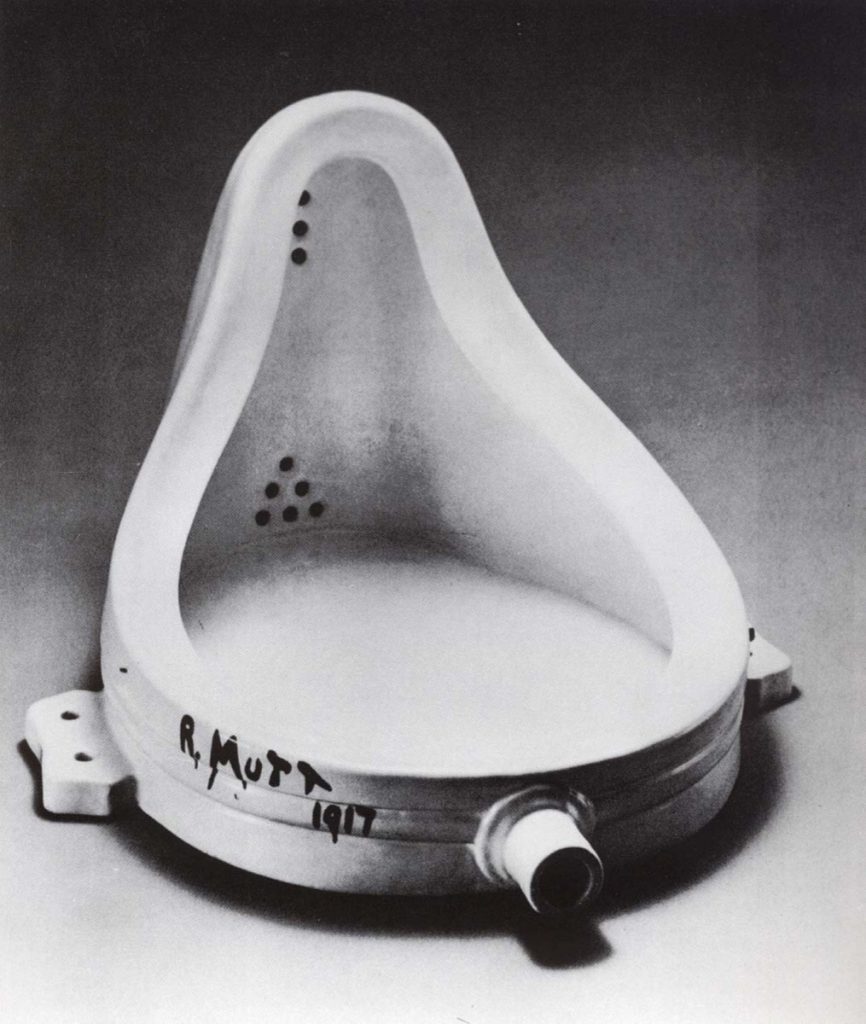
As a word, it is nonsense. As a movement, however, Dada fine art proved to exist i of the revolutionary art movements in the early twentieth century. Initially conceived by a loose ring of advanced modernists in the prelude to World War I just adopted more fully in its wake, the Dadaist celebrated luck in place of logic and irrationality instead of calculated intent.
Know someone who would find this commodity interesting?
Central dates:1916-1924
Key regions:Switzerland, Paris, New York
Keywords:Chance, luck, nonsense, anti-fine art, readymade
Key artists:Hugo Brawl, Marcel Duchamp, Hans (Jean) Arp, Sophie Taeuber-Arp, Hannah Höch, Man Ray, Francois Picabia
Key characteristics: Humoristic, disposed towards the absurd, satirical attitude towards authority
Dadaism: Origins and Central Ideas of the Fine art Move
During the First World State of war, countless artists, writers, and intellectuals who opposed the state of war sought refuge in Switzerland. Zurich, in detail, was a hub for people in exile, and it was here that Hugo Ball and Emmy Hemmings opened the Cabaret Voltaire on Feb 5, 1916. The Cabaret was a meeting spot for the more than radical advanced artists. A cantankerous between a nightclub and an arts center, artists could exhibit their piece of work in that location amongst cutting-edge poetry, music, and trip the light fantastic toe. Hans (Jean) Arp, Tristan Tzara, Marcel Janco and Richard Huelsenbeck were among the original contributors to the Cabaret Voltaire. As the war raged on, their art and performances became increasingly experimental, dissident and anarchic. Together, they protested confronting the pointlessness and horrors of the war nether the battle cry of DADA.
The cardinal premise behind the Dada fine art motion (Dada is a colloquial French term for a hobby horse) was a response to the modernistic historic period. Reacting confronting the ascension of backer culture, the war, and the concurrent degradation of art, artists in the early 1910s began to explore new art, or an "anti-art", equally described by Marcel Duchamp. They wanted to contemplate the definition of art, and to do and then they experimented with the laws of hazard and with the found object. Theirs was an art course underpinned by humor and clever turns, only at its very foundation, the Dadaists were asking a very serious question about the function of art in the modern age. This question became even more than pertinent every bit the reach of Dada art spread – by 1915, its ideals had been adopted by artists in New York, Paris, and beyond – and as the world was plunged into the atrocities of Earth War I.
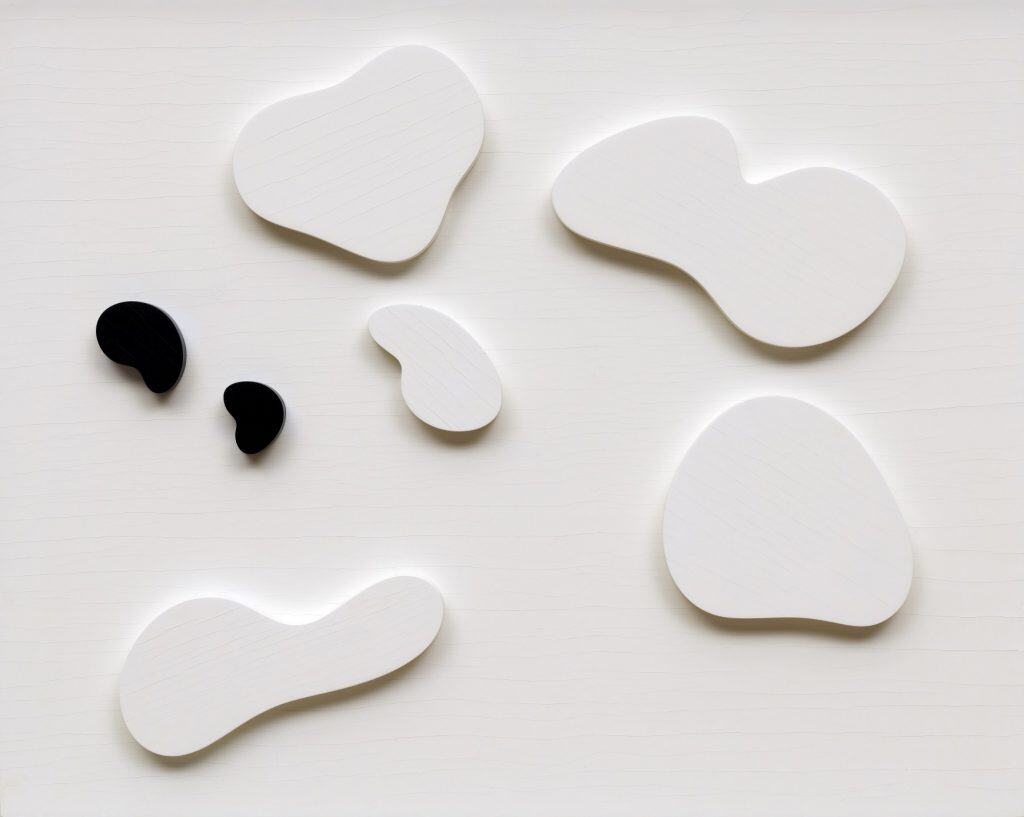
Advent of the Readymade
Ane of the most iconic forms to emerge amidst this flourish of Dadaist expression was the readymade, a sculptural form perfected by Marcel Duchamp. These were works in which Duchamp repurposed constitute or factory-fabricated objects into installations. In Accelerate a Broken Arm (1964), for instance, involved the suspension of a snow shovel from a gallery mountain; Fountain (1917), arguably Duchamp's well-nigh recognizable readymade, incorporated a mass-produced ceramic urinal. By taking these objects out of their intended functional space and elevating them to the level of "fine art," Duchamp poked fun at the art establishment while also asking the viewer to seriously contemplate how nosotros capeesh fine art.
Different modes of Dadaism
Equally Duchamp's readymades exemplify, the Dadaists did not shy away from experimenting with new media. For example, Jean Arp – a sculptor who pioneered dadaism – explored the art of collage and the potential for randomness in its creation. Man Ray also toyed with the arts of photography and airbrushing as practices that distanced the mitt of the artist and thus incorporated collaboration with a chance. Beyond these artistic media, the Dadaists also probed the literary and performance arts. Hugo Brawl, for instance, the man who penned the unifying manifesto of Dadaism in 1916, investigated the liberation of the written word. Freeing text from the conventional constraints of a published page, Ball played with the power of nonsensical syllables presented as a new class of poetry. These Dadaist poems were oft transformed into performances, allowing this network of artists to move easily between media.
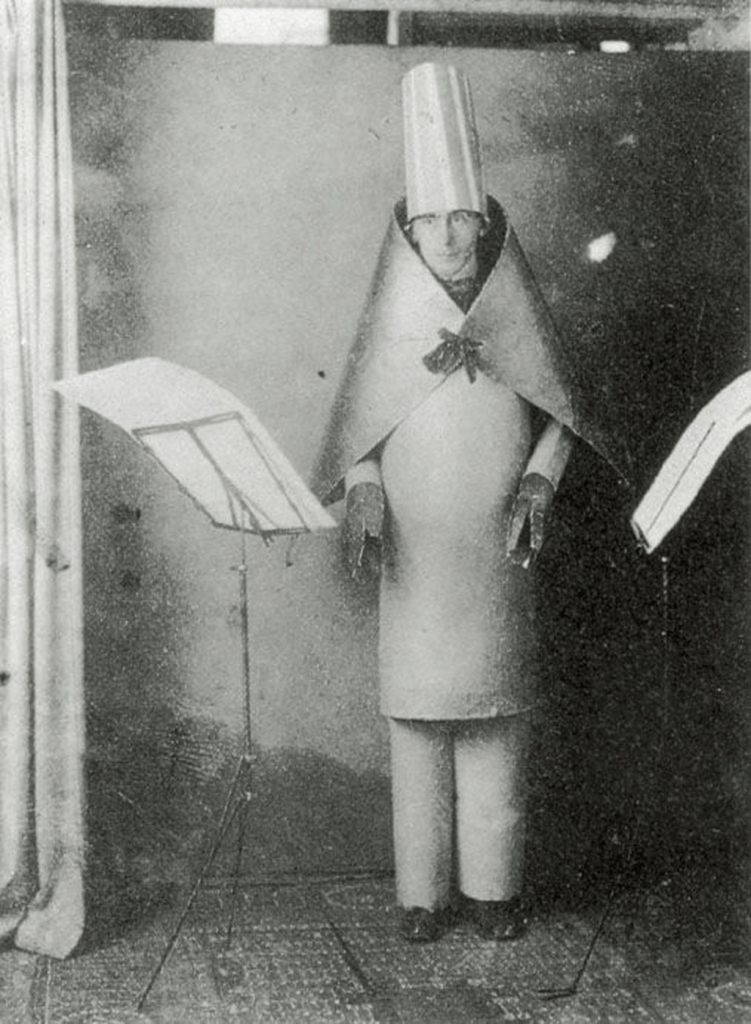
Examples of Famous Dada Artworks
The movement has brought many famous artworks. Here are a selected few examples of dadaism artworks:
- Marcel Duchamp'south Fountain (1917)
- Marcel Duchamp'due south Bike Bike (1913)
- Man Ray'southward Ingres'southward Violin (1924)
- Hugo Brawl'south Sound Poem Karawane (1916)
- Raoul Hausmann'due south Mechanical Head (The Spirit of our Time) (1920)
1. Marcel Duchamp's Fountain (1917)
In 1917, Marcel Duchamp submitted a urinal to the Social club of Independent Artists. The Society refused Fountain because they believed it could not be considered a work of art. Duchamp's Fountain raised countless important questions about what makes art art and is considered a major landmark in 20th-century fine art.
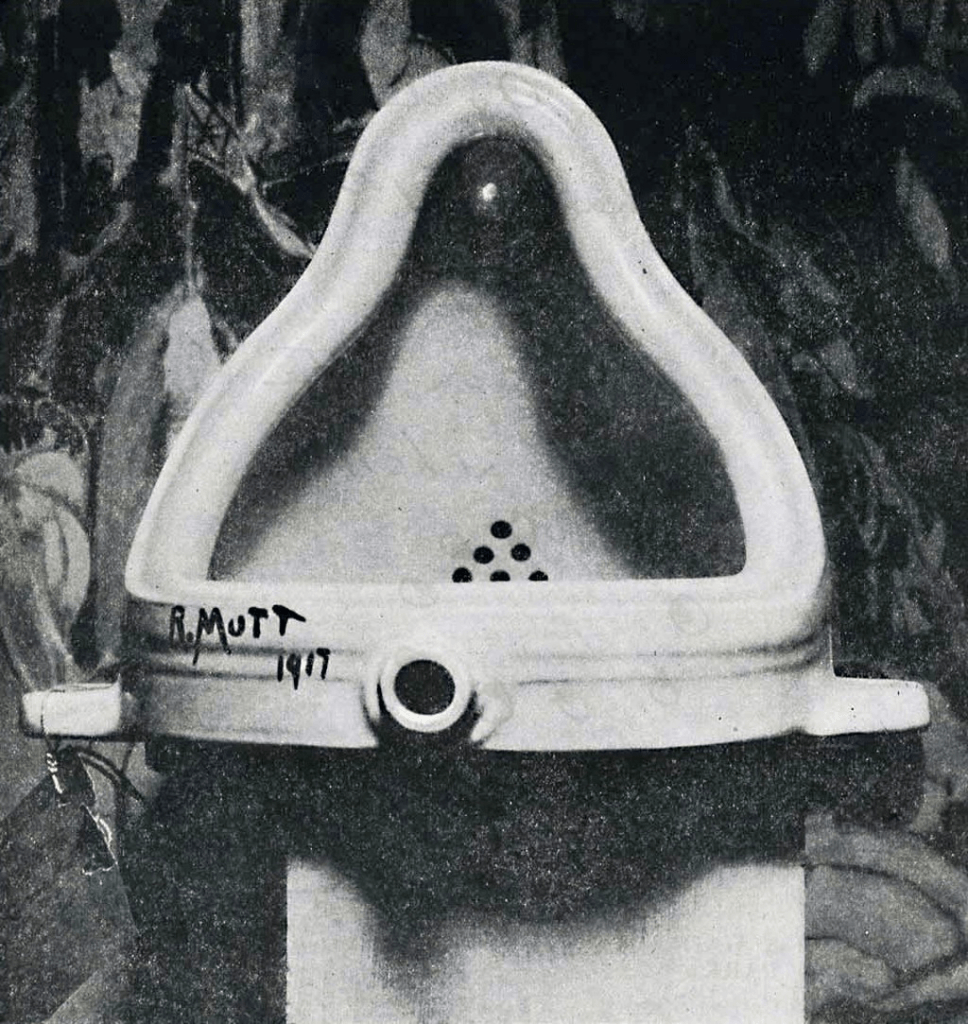
2. Marcel Duchamp's Bicycle Wheel (1913)
"In 1913, I had the happy idea to fasten a cycle cycle to a kitchen stool and watch information technology turn," said Marcel Duchamp about his famous work Bicycle Wheel. Bike Cycle is the first of Duchamp's readymade objects. Readymades were individual objects that Duchamp repositioned or signed and called fine art. He called Bicycle Cycle an "assisted readymade," fabricated by combining more than 1 utilitarian item to form a work of art.
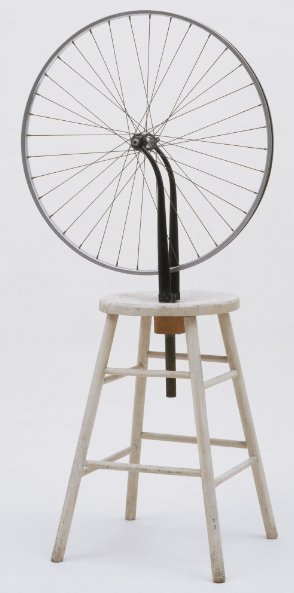
3. Man Ray'southward Ingres's Violin (1924)
By painting f-holes of a stringed instrument onto the photographic print of his nude model Kiki de Montparnasse and rephotographing the print, Man Ray contradistinct what was originally a classical nude. The female torso was now transformed into a musical musical instrument. He too added the title Le Violin d'Ingres, a French idiom that means "hobby."
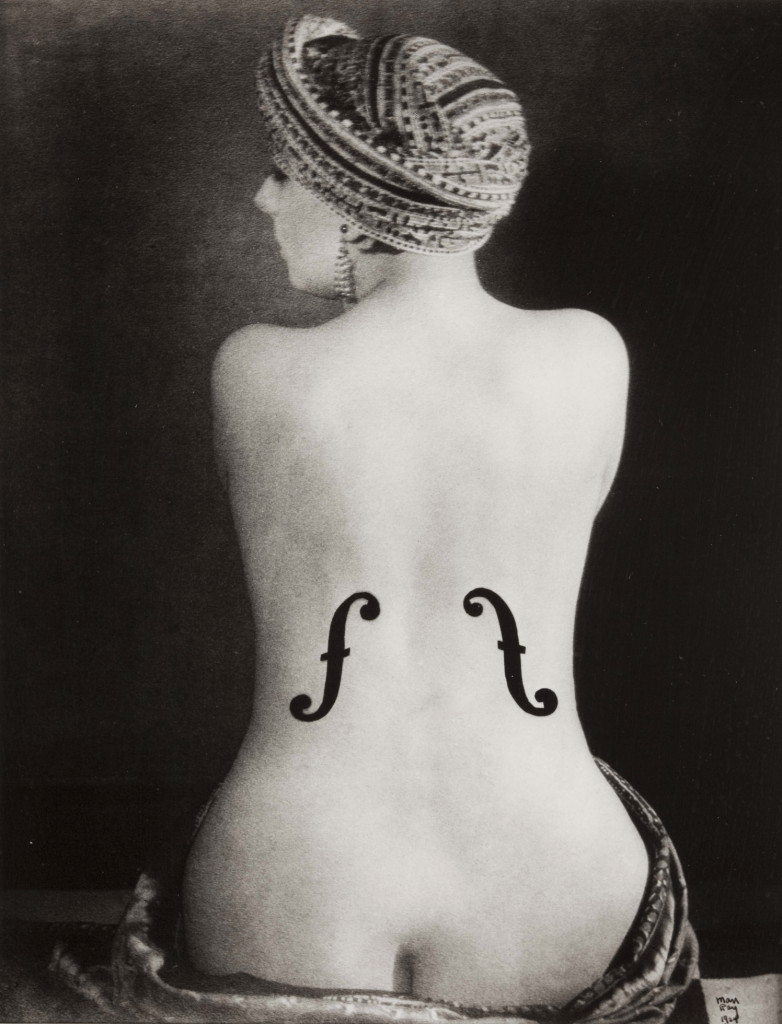
four. Hugo Brawl'due south Sound Poem Karawane (1916)
Founder of the Cabaret Voltaire and writer of the first Dadaist Manifesto in 1916, well-nigh of Brawl's piece of work was in the genre of sound poetry. In 1916, the same year in which the published the outset Dadaist Manifesto, Ball performed the sound verse form Karawane. The opening lines were:
jolifanto bambla o falli bambla
Hugo Ball
großiga m'pfa habla horem
The residual of the poem continued much forth the same lines. Though the poem could exist confused with random, mad ramblings, audio-verse was really a deeply considered method in the experimental literature. The thought was to bring the sounds of homo vocalization to the foreground by removing everything else.
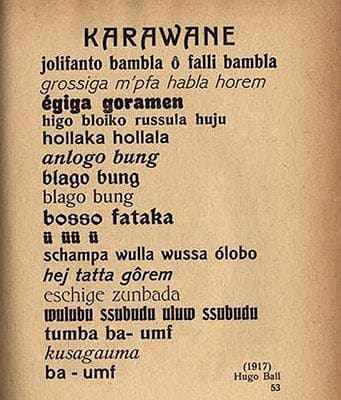
5. Raoul Hausmann'south Mechanical Caput (The Spirit of our Time) (1920)
Raoul Hausmann was a poet, collagist, and functioning artist, who is best known for his sculpture entitled Mechanical Head (The Spirit of Our Fourth dimension). The manikin head made from a solid wooden block is a reversal of Hegel'due south assertion that "everything is listen." For Hausmann, human being is empty-headed "with no more capabilities than that which take chances has glued to the exterior of his skull." By raising these topics, Hausmann wanted to compose an epitome that would shatter the mainstream Western conventions that the head is the seat of reason.
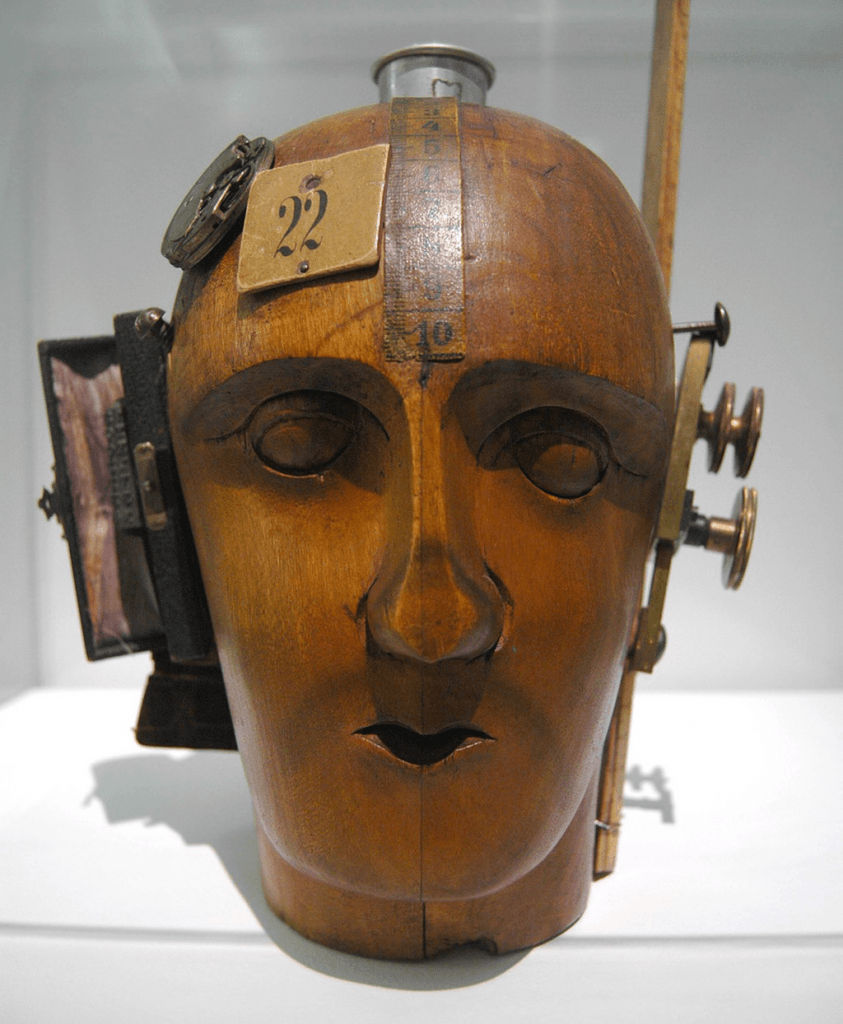
Reception, Downfall, and Dissemination of Dadaist Ideals
The bold new approaches of the Dadaists stirred controversy within gimmicky culture. Their swift interruption from tradition, their impassioned pursuit of a new mode of expression, and their willingness to bring the revered globe of "fine art" back to a more level and egalitarian playing field through both humor and inquisitive investigation allowed Dada artists to attract both fans and foes of their work. Some saw Dadaist expression every bit the next step forwards in the advanced march; others missed the significance and instead saw works, such every bit Duchamp's readymades, as non art but simply their constituent objects (leading to some of the originals being relegated to the refuse pile).
Dadaism gripped audiences into the 1920s, but the movement as a whole was destined to crumble. Some, like Man Ray, found their inclinations moving into the subconscious realm of Surrealism; others found the pressures on the modern European creative person too weighty to conduct. The rise to power of Adolf Hitler in the 1930s dealt a powerful blow to the modern art world, as the maniacal autocrat sought to rout out the roots of modern fine art, a field he considered "degenerate." As a result, Dada artists witnessed their works mocked or destroyed and thus chose to escape the stifling air of Europe for the more liberated artistic climate of the United States and beyond.
Thought many of these initial members scattered, the ideals of Dadaism remained alive and well among gimmicky artists. In many regards, one tin see the threads of Dada revived. For example, during the Pop Art era, Neo- Dadaism presented motifs and cultural commentaries interpreted with a hint of Dadaist intrigue. Merely information technology was in the latter half of the twentieth century that the full impact of the Dadaist moment was realized. In addition to the two major international retrospectives dissecting the Dadaist oeuvre (one in 1967 in Paris and some other in 2006 at diverse international venues), greater research was lavished on the comprehension and preservation of their legacy.
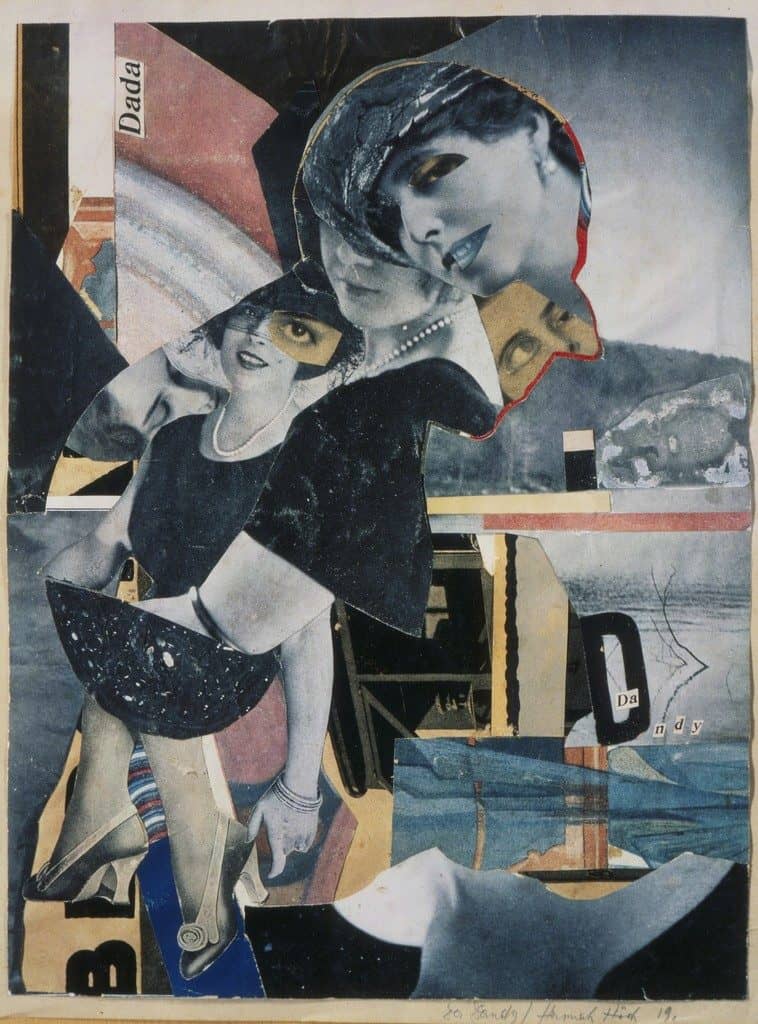
Collecting Dada Art
Though offering a universal appeal, Dadaist works can prove a challenge to collect. Across problems of authenticity, it is hard to chart or project the prices such works will accomplish, a problem owed to the sheer variety of media. That being said, one can note the consistency with which Dadaist works have exceeded expectations at sale. The notable sale of Marcel Duchamp's Nu sur nu (1910-1911) for more $1.iv million in June 2016 doubled the estimated sales price of betwixt $555,000 – $775,000. François Picabia'south Ventilateur (1928) sold at Sotheby'south in February 2016 for more than $three.1 1000000 at the college terminate of its predicted sales range. What this trend seems to suggest is that the interest in Dada fine art expression and the Dada movement is all the same alive and well, with collectors knowledgeable with regards to the good deals that might pop upwardly at auction.
FAQ
What is Dadaism?
Dadaism is an artistic movement from the early 20th century, predating surrealism and with its roots in a number of major European artistic capitals. Developed in response to the horrors of WW1 the dada motility rejected reason, rationality, and guild of the emerging backer society, instead favoring chaos, nonsense, and anti-bourgeois sentiment.
Who are the main Dadaist artists?
The most renowned Dada artists are Marcel Duchamp, Francis Picabia, and Man Ray in Paris, George Grosz, Otto Dix, John Heartfield, Hannah Höch, Max Ernst, and Kurt Schwitters in Germany, and Tristan Tzara, Richard Huelsenbeck, Marcel Janco and Jean Arp in Zurich.
Where did Dadaism originate?
There is some disagreement as to where Dada was founded. Many believe that the move first developed in the Cabaret Voltaire, an avant-garde nightclub in Zurich, others merits a Romanaian origin. What is articulate is that there was a pan European sensibility emerging during WW1, particularly during 1916, and that articulate adherents the primary themes can exist identified in Zurich, Berlin, Paris, Hanover, Cologne, the Netherlands and even as far abroad as New York.
What are the main characteristics of dadaism?
A Dadaism is often characterized past sense of humor and whimsy, tending towards the cool. This kind attitude was used as a satirical critique of the prevailing societal and political systems, to which the onslaught of WWI was largely attributed to.
What does dadaism mean?
The name Dada is one derived from nonsense and irrationality. In some languages, information technology meant 'yes, yeah' every bit a parody of the population's senseless obedience to authority, whilst in others, it had completely dissimilar meanings and connotations. The name is attributed to Richard Huelsenbeck and Hugo Ball, although Tristan Tzara also claimed authorship – the idea being that information technology would take multiple nonsense meanings.
How is dadaism a reaction to WW1?
Dadaism was a motion with explicitly political overtones – a reaction to the senseless slaughter of the trenches of WWI. It essentially alleged war against war, countering the applesauce of the establishment's descent into chaos with its ain kind of nonsense.
Which composer was almost closely associated with dadaism?
Dada ideal also extended to the field of sound. Among others, Francis Picabia and Georges Ribemont-Dessaignes realized Dada music to be performed at the 1920 Festival Dada, but too renowned composer Erik Satie also dipped into Dadaist audio experiments.
Read more well-nigh Art Movements and Styles Throughout History here.
Know someone who would discover this article interesting?
Source: https://magazine.artland.com/what-is-dadaism/
0 Response to "What Did Data Artist Commonly Refer to There Art as"
Post a Comment